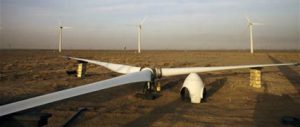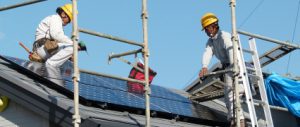South Korea emerged from national parliamentary elections in April with the ruling Saenuri party holding a wafer-thin majority; the presidential election in December is the next milestone. The slashed majority and new president pose questions about the durability of South Korea’s green growth strategy beyond 2012.
South Korea has entered the ranks of the industrialised world and joined the Organisation for Economic Cooperation and Development (OECD) on the back of tremendous industrial success. Its economy has grown 30-fold since 1980 with GDP per capita now well over US$20,000.
However, this success was based on a high-energy and high-carbon model: its per-capita energy use continues to rise and is above its regional peers, China and Japan. Carbon emissions have more than doubled since 1990 on the back of industrial growth and now rank ninth in the world. South Korea’s carbon intensity is now the second highest of the G20 developed economies.
Another problem is that South Korea relies on imports – over 96% – for its primary energy needs. In 2011, energy imports cost over US$173 billion, more than the nation’s total exports of ships, semiconductors, mobile phones, LCDs and computers together. Primary energy in South Korea is also highly reliant on fossil fuels, mainly petroleum but also coal and liquid natural gas (LNG), which continues to supply over 80% of primary energy.
Oil now accounts for one-quarter of imports by value, and the reality of high crude prices poses a strategic risk for the economy, especially as energy costs remain controlled to underpin industrial competitiveness.
High energy usage, compounded by the rising cost of energy, the extreme reliance on imports, the doubling of carbon emissions since 1990 and South Korea’s emergence as a developed country called for a change in the structure of its economic growth – from economic to sustainable development. During the build-up to the UN climate talks in Copenhagen in 2009, and as the clean-tech sector boomed, the newly elected president Lee Myung-bak made green growth a cornerstone of his administration, introducing the green growth plan in 2008.
President Lee also outlined a non-binding political target to reduce greenhouse-gas emissions by 30% from 2020 business-as-usual levels, which translates into around a 4% reduction on its 2005 emissions – quite a break with historical trends.
South Korea’s existing strength in batteries, LEDs, smart grid and nuclear provide the foundation for the green-growth plan. The government defined new growth industries and new technologies as the engines to drive green growth and is keen to nurture them with research and development (R&D). In 2009, two trillion won (US$1.8 billion) was invested in green R&D, and this increased to 2.3 trillion won (US$2.1 billion) in 2010.
New technologies, such as technology for enhancing the efficiency of appliances and fuel cells, are the major recipients of this investment, receiving an estimated one-quarter of the total government R&D budget.
South Korea is also a strong trading nation; in 2011, its external trade (value of exports plus imports) reached US$1 trillion, equivalent to 83% of GDP. In reaching this milestone, South Korea has become a leader in technology exports. For example, Samsung televisions now account for one in five sets sold throughout the world, with LG televisions one in 10, displacing Japanese television makers who have traditionally held the largest market shares.
South Korea currently ranks seventh in the world for exports of climate-smart goods and technologies (CSGT) – defined by the UN as “products, components and technologies that tend to have a relatively less adverse impact on climate change” – up from fifteenth in 2005. At HSBC, we expect South Korea to displace Japan as the fourth largest in 2015. By then, as a share of South Korea’s total exports, CSGT exports could almost double to 4.6%, according to our analysis.
This future CSGT export growth will be underpinned by the steady adoption of carbon constraints in key markets. In 2005, the European Union was the only major market with meaningful climate targets. Looking forward to 2015, Australia’s cap-and-trade system will be up and running, as will California’s; China is also widely expected to have a similar carbon system in key provinces. Consequently, over half of South Korea’s CSGT exports could be to carbon-constrained countries. In our view, efforts made in carbon reduction and efficiency now will pay dividends in a future world where lower carbon footprint products are expected to be in higher demand.
In order to achieve the 2020 emissions reduction target, South Korea has established a two-phase plan: first, a standard emissions cap and reduction plan, the target management system (TMS); then, an emissions trading scheme (ETS) from 2015. Many South Korean companies have been collecting and publishing emissions data for a number of years, hence the steady and organised transition to a cap system and then a trade system. The ETS was twice postponed ahead of its vote in South Korea’s national assembly, but was passed in early May.
Many businesses in South Korea have opposed these mandatory schemes, because they believe constraining carbon will affect their competitiveness on the global stage and could impact national GDP. However, research by the South Korean government suggests that meeting the 2020 reduction target would directly cost only around 0.5% of the country’s GDP. And this estimate excludes any benefits such as energy savings and a stimulus to innovation.
Regardless of the outcome of the presidential elections, there should be continuity in terms of the industrial focus on green growth: R&D, investment and innovation. South Korea’s green growth trajectory began before president Lee’s administration, and it will continue beyond it. Key pieces of legislation have been put in place and substantial government resources (equivalent to 2% of GDP) have been allocated to boost innovation.
South Korea’s strength in LEDs, batteries, smart grid, offshore, solar and nuclear will continue to be in demand as the global economy seeks to move towards lower carbon, more efficient growth.
In our view, both government and industry wish to maintain South Korea’s growing international reputation in a way that is in tune with green growth: by vying to host the new UN Green Climate Fund – the country has submitted a bid to host its secretariat in the city of Incheon – and by remaining a strong exporter of high-quality and high-tech goods.
The green-growth plan accentuates the positives of South Korea’s existing industrial structure around the smart economy. Targets for carbon, renewables, efficiency, and smart grids have started off modestly, but could be amplified as experience grows.
Historically, South Korea has followed the west in its economic development path. But with low-carbon development, there is no model to follow and so South Korea must pursue its own green-growth track. In our view, South Korea will choose the right direction at the crossroads: straight ahead.
Wai-Shin Chan is climate change strategist at HSBC.
Homepage image by Stuck in Customs



